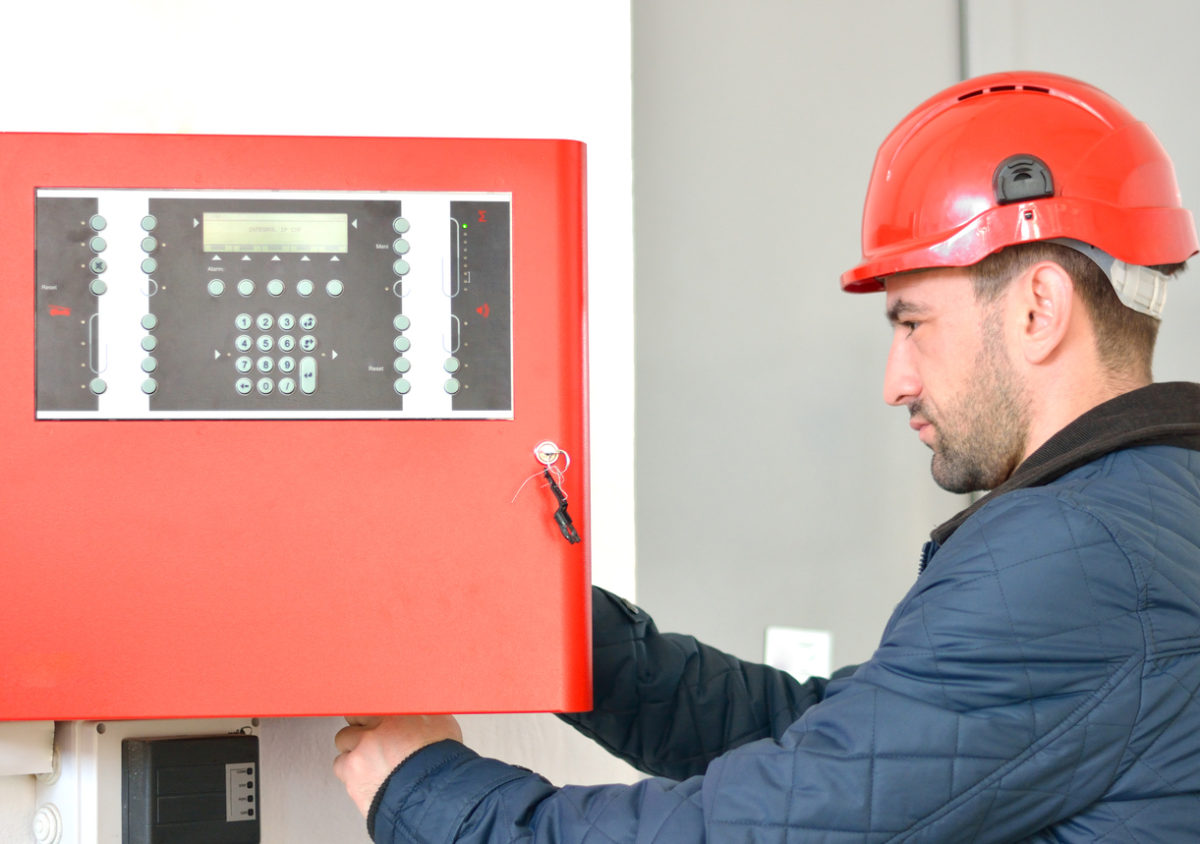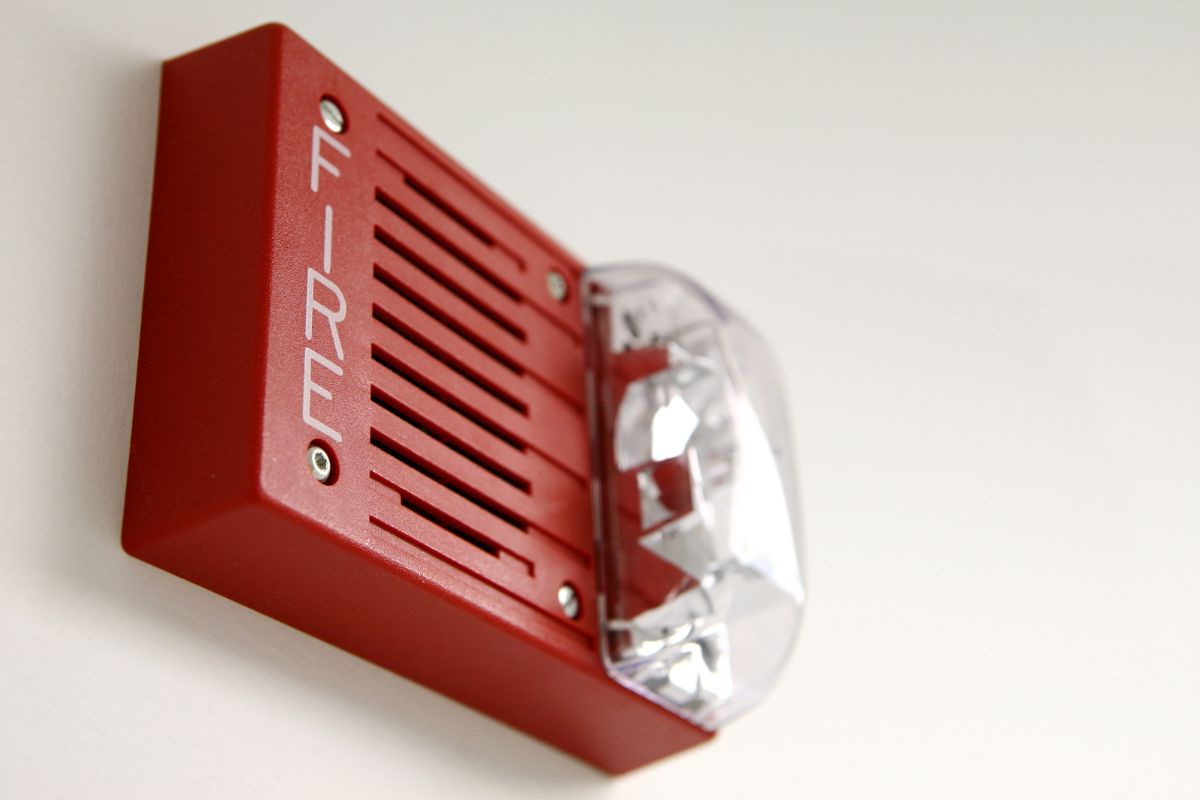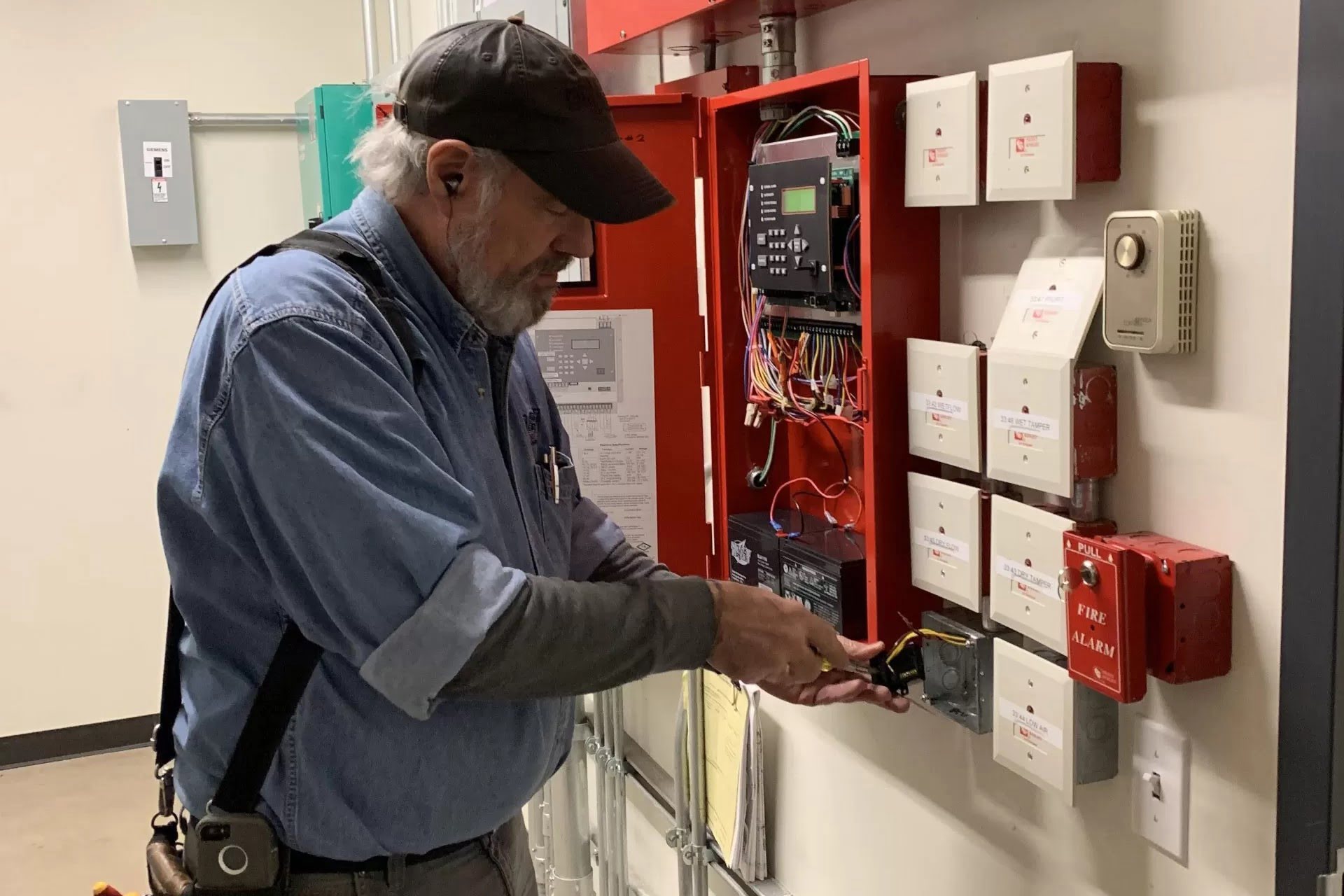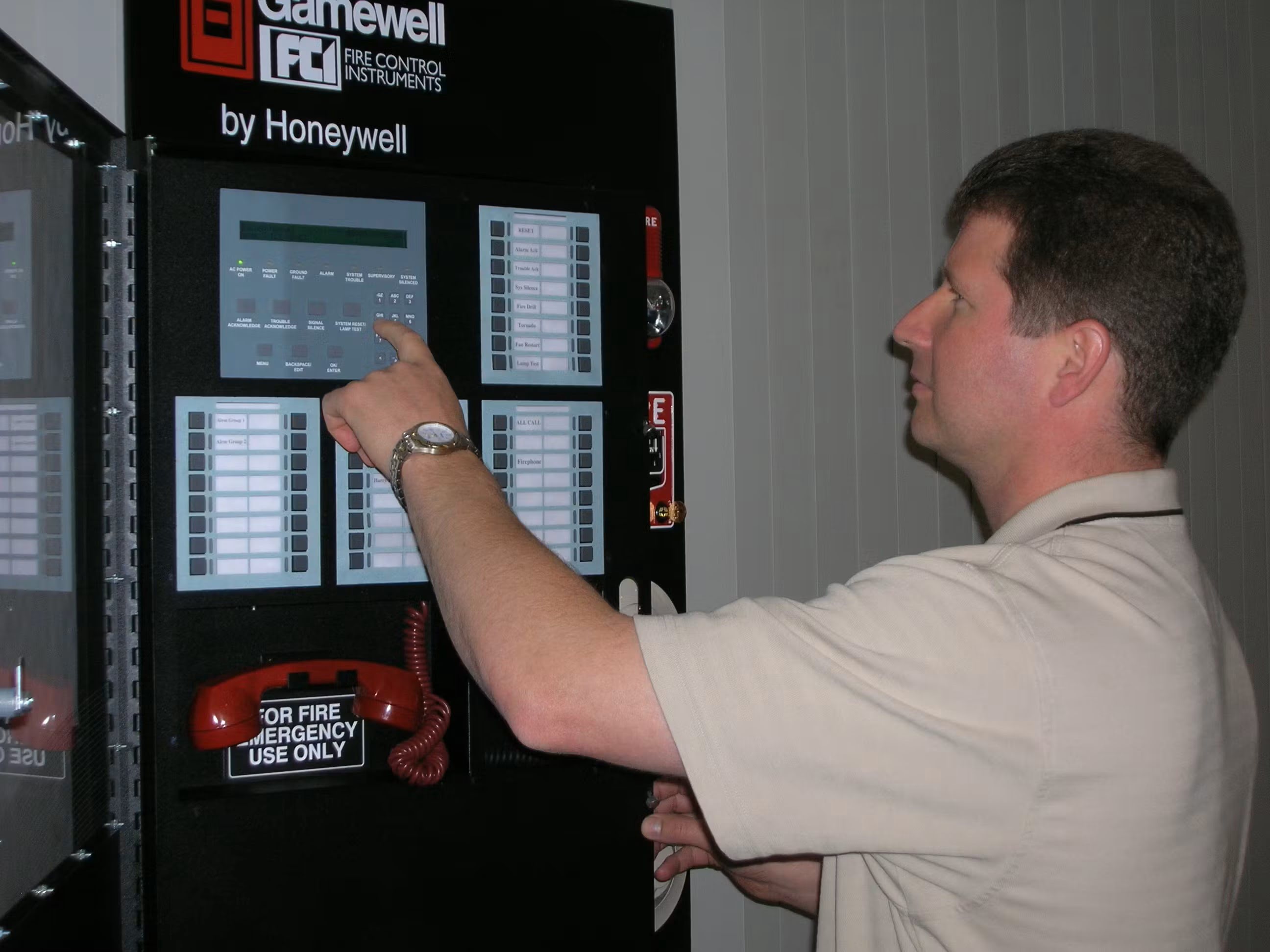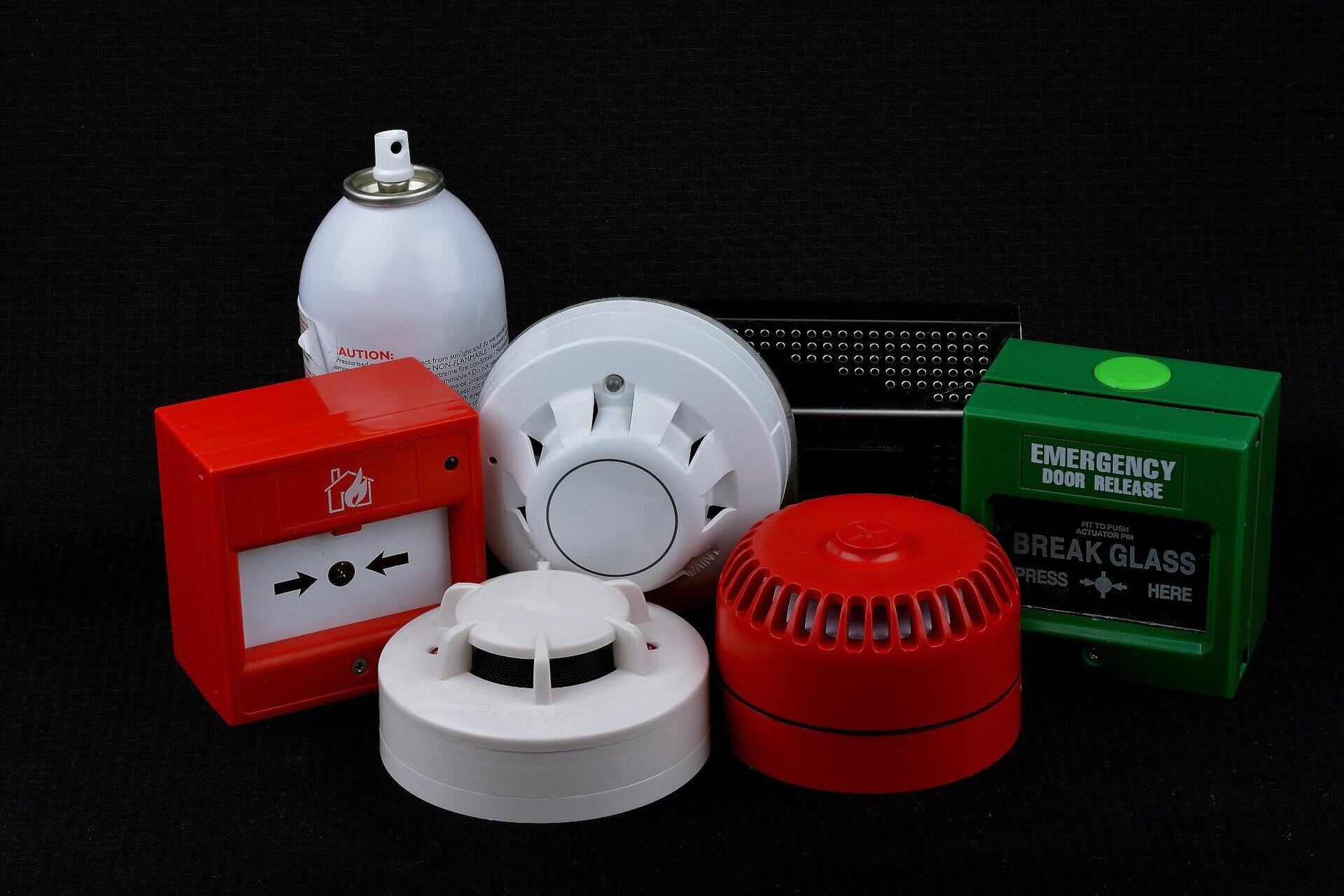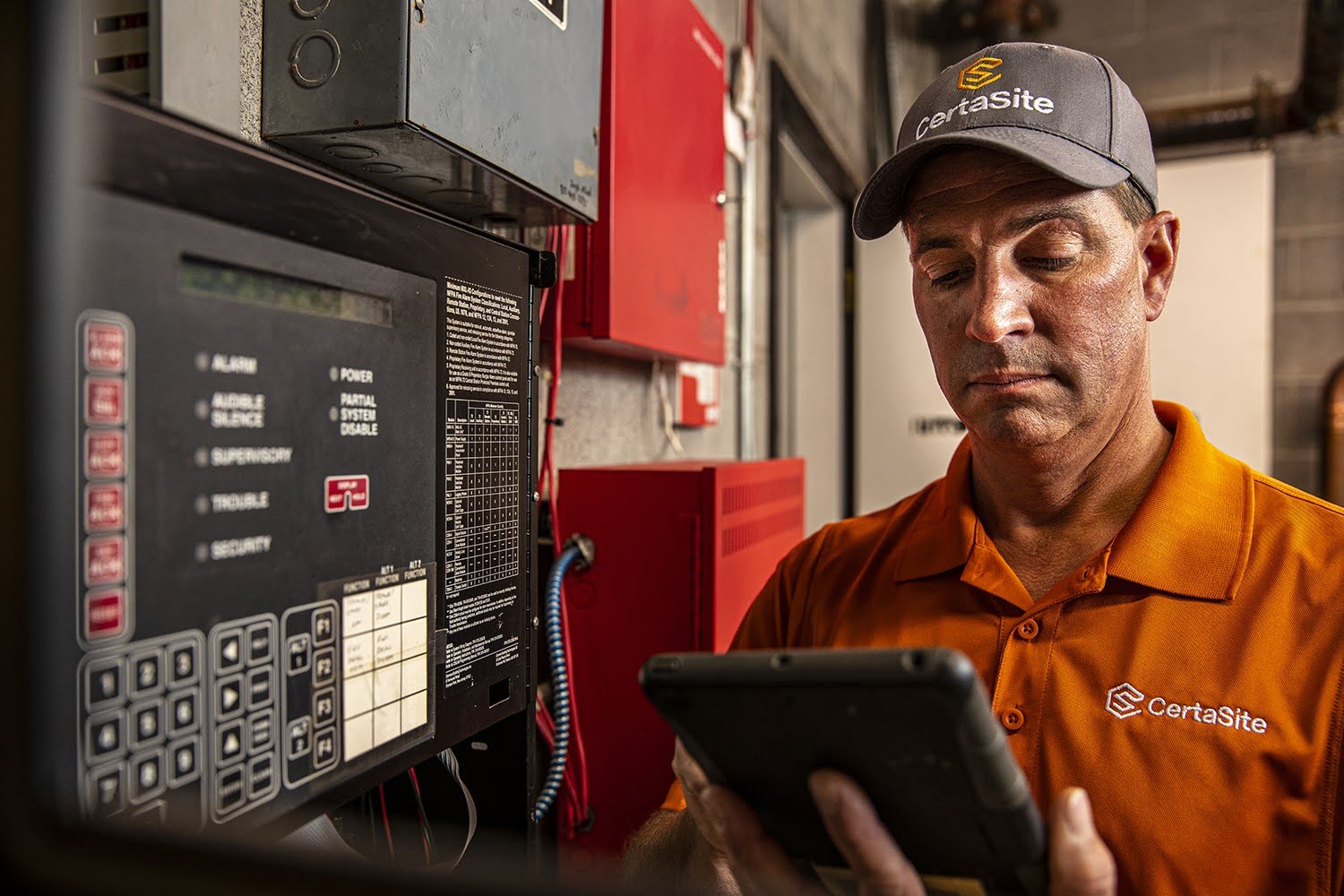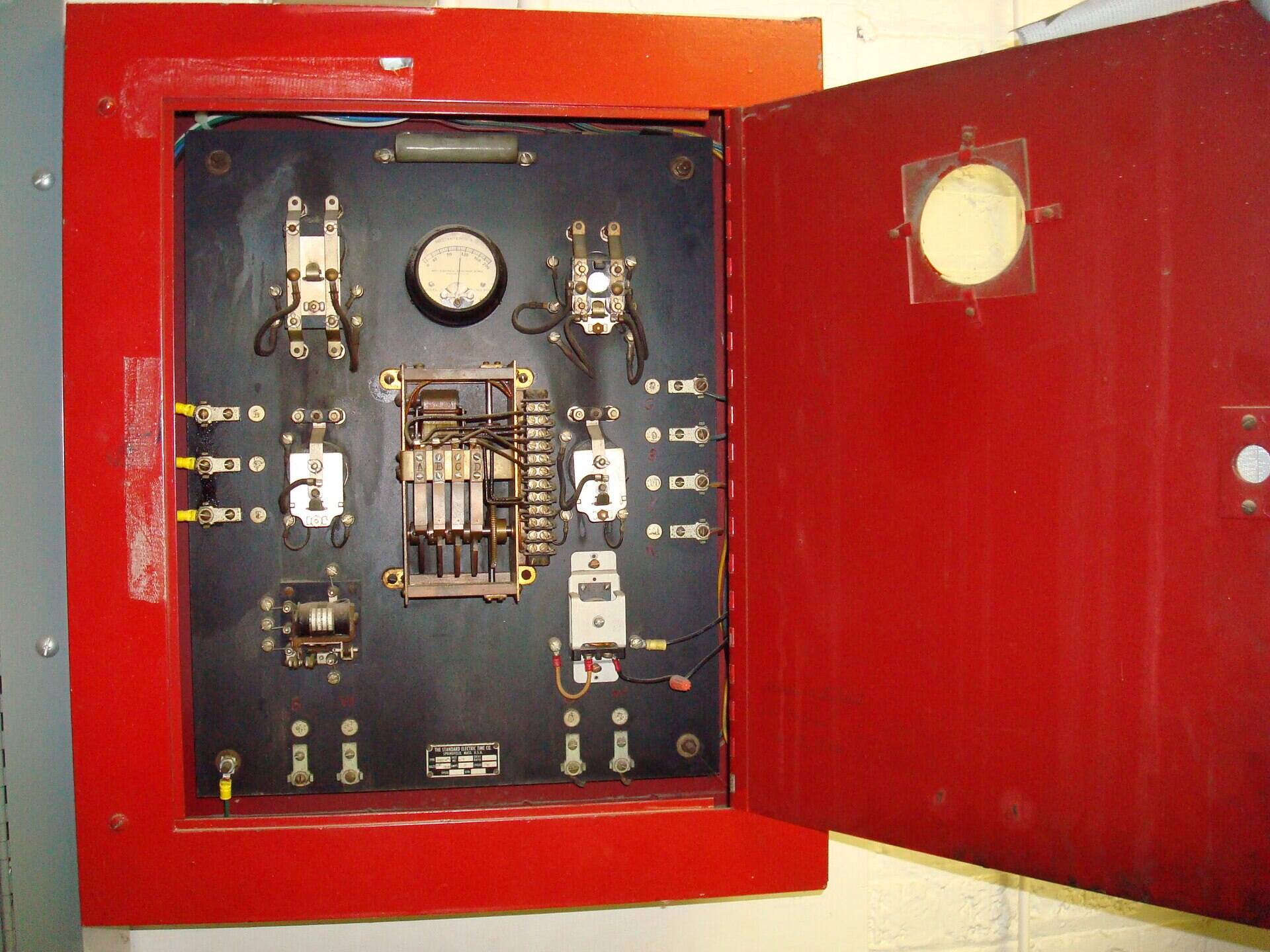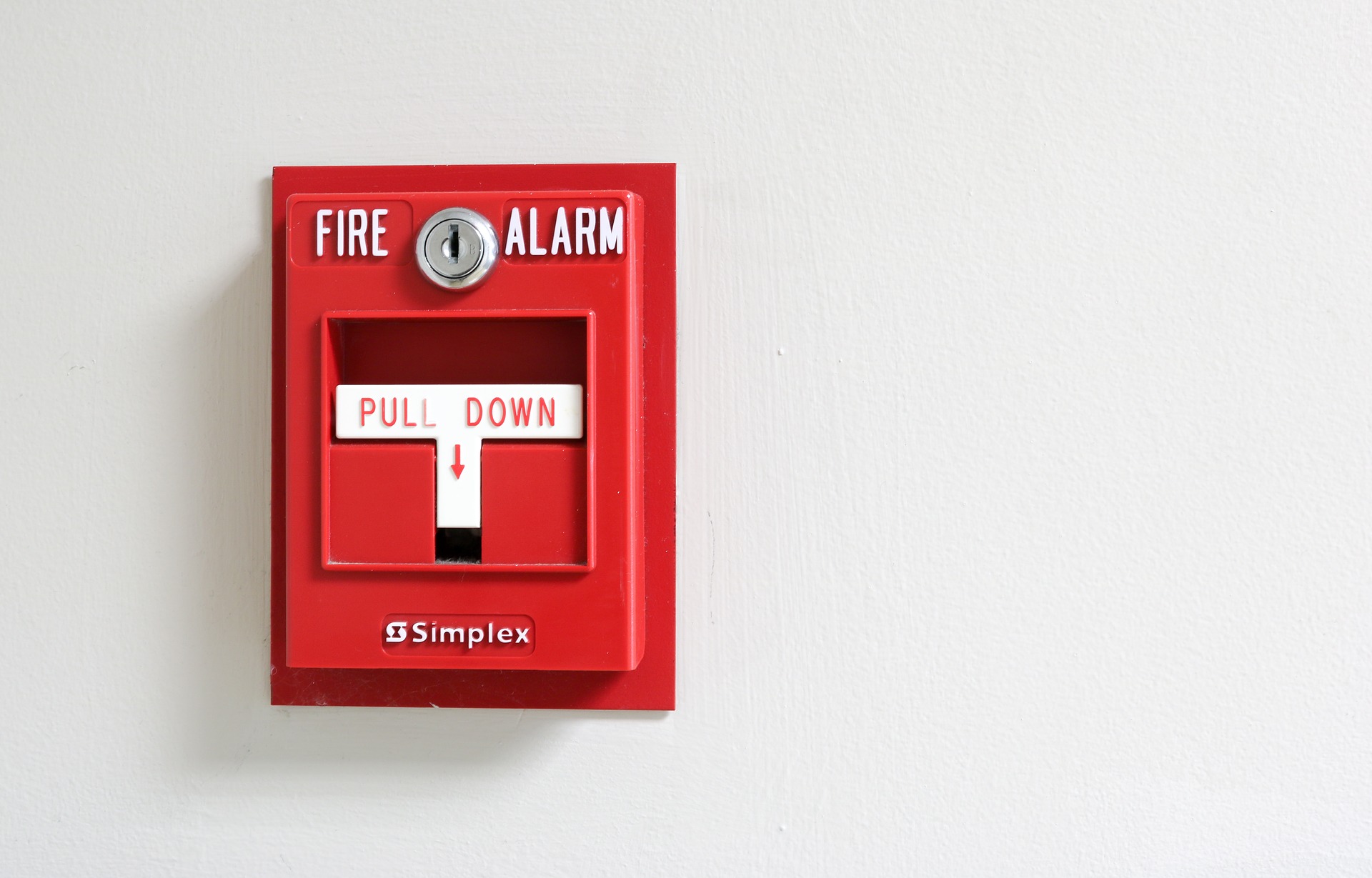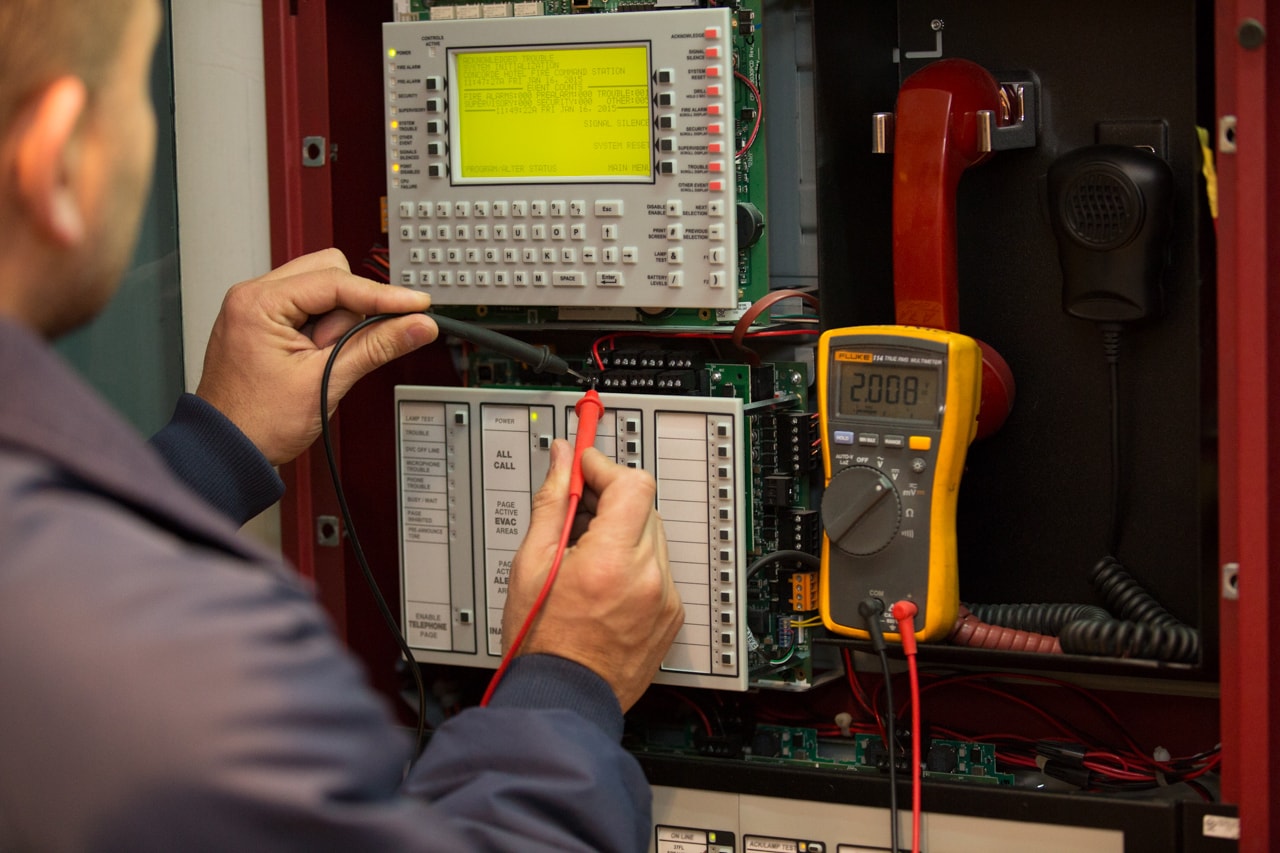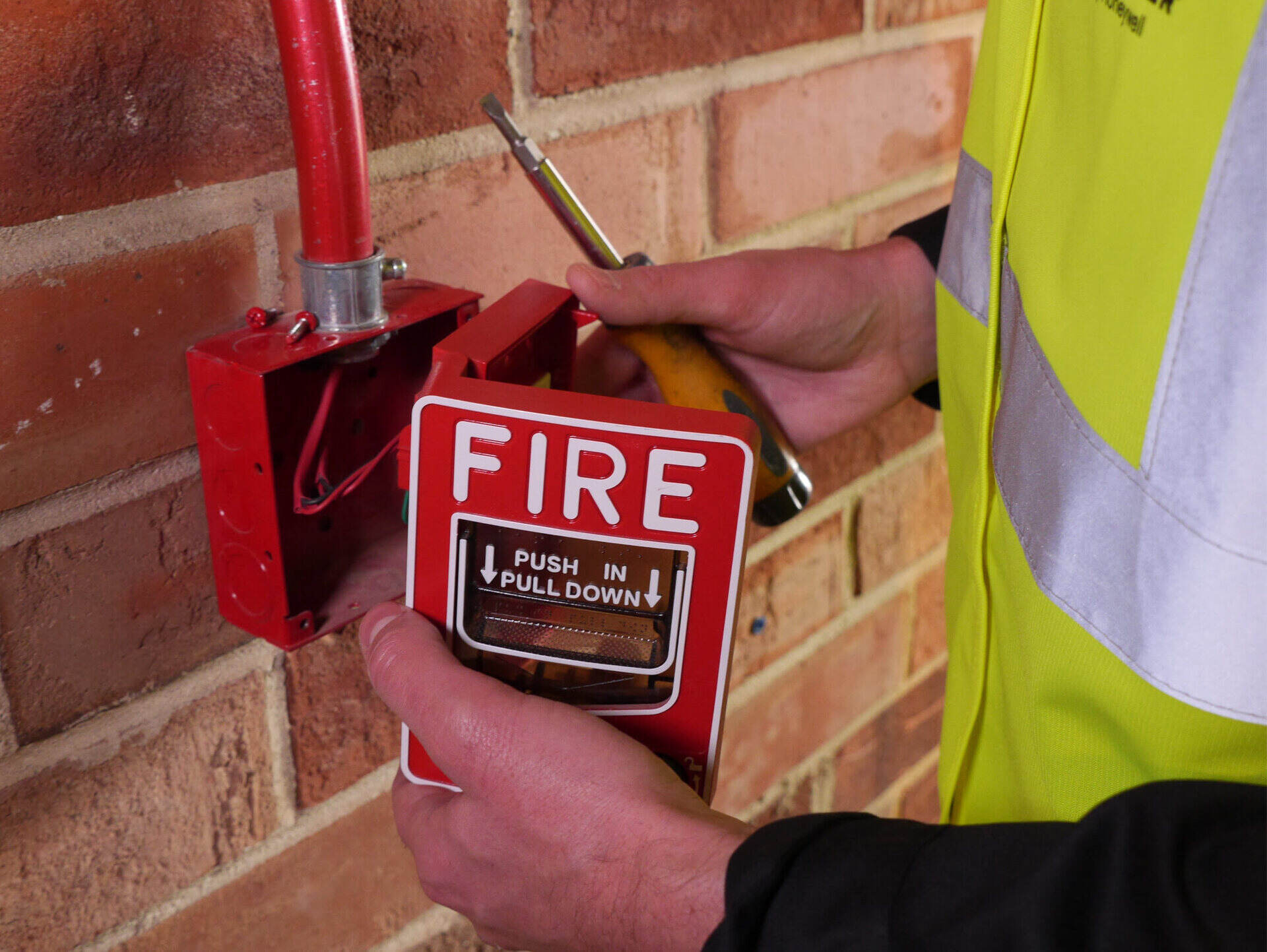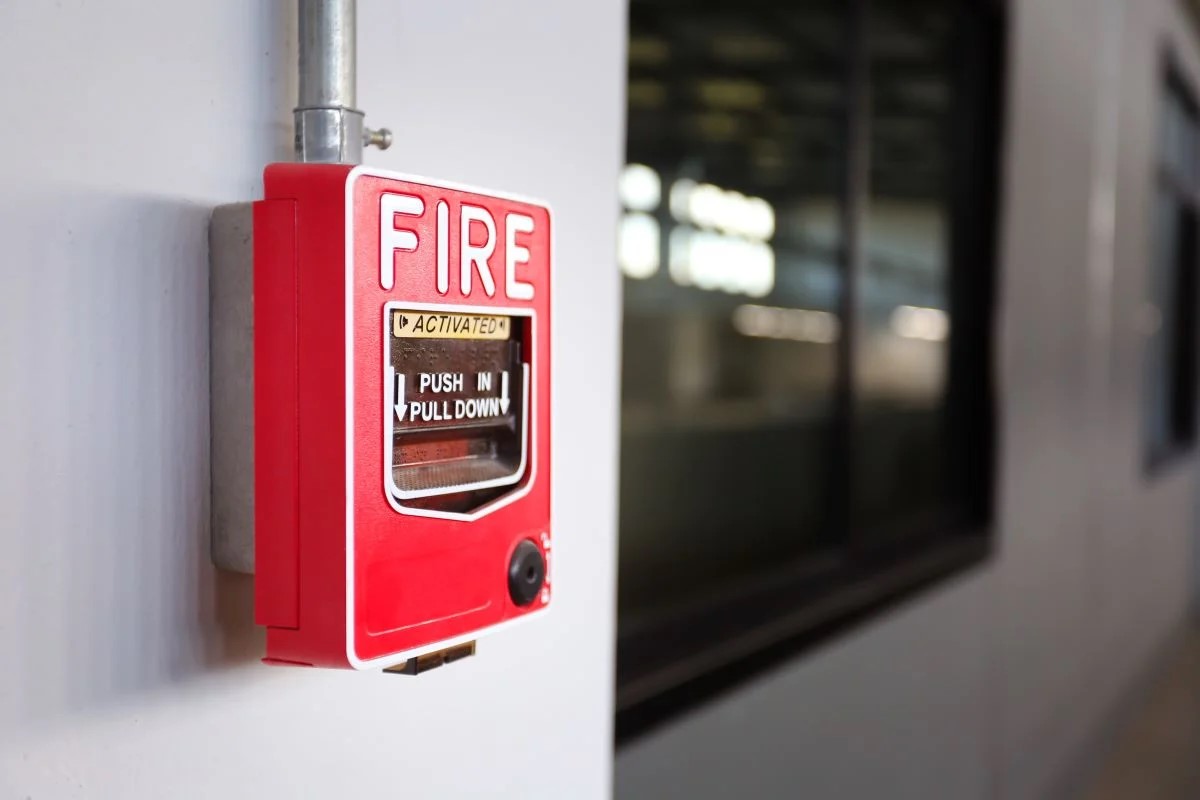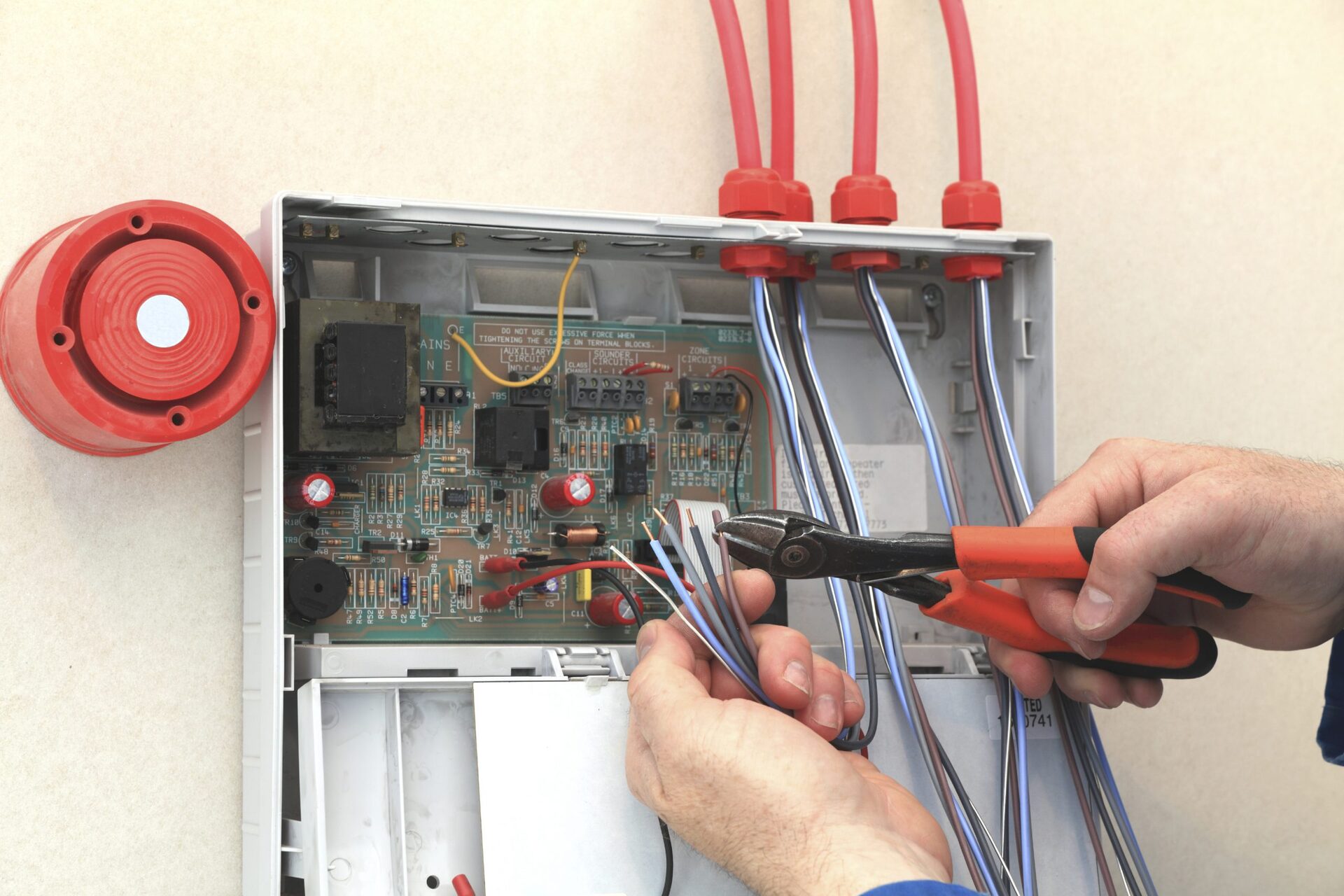Home>Home Security and Surveillance>How To Get A Fire Alarm Systems Training
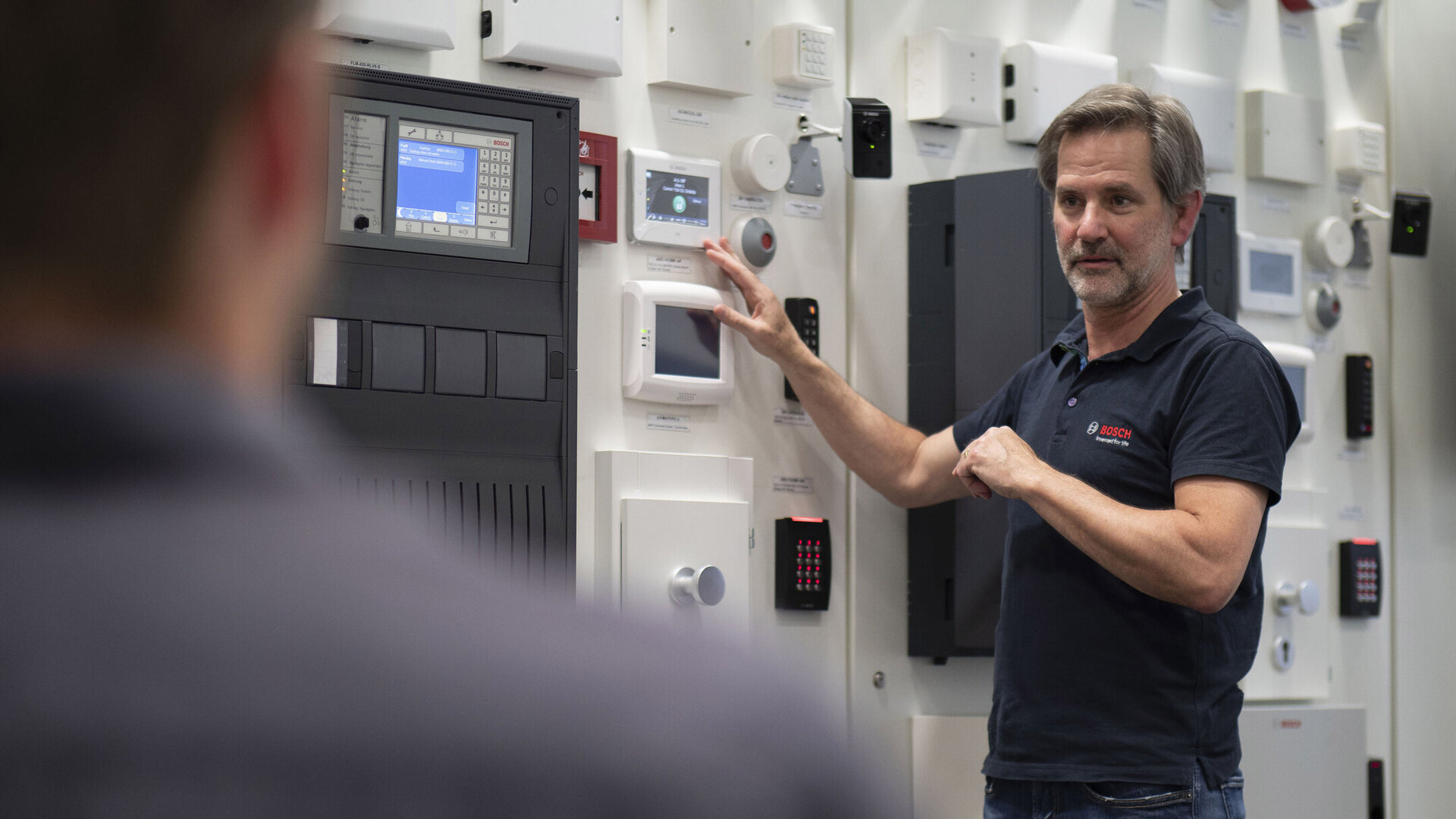

Home Security and Surveillance
How To Get A Fire Alarm Systems Training
Modified: March 6, 2024
Looking for home security and surveillance? Learn how to get a fire alarm systems training to protect your property and loved ones. Start today!
(Many of the links in this article redirect to a specific reviewed product. Your purchase of these products through affiliate links helps to generate commission for Storables.com, at no extra cost. Learn more)
Introduction
When it comes to protecting your home or business from the devastating effects of a fire, having a reliable and effective fire alarm system is absolutely essential. A fire alarm system serves as a crucial early warning system, alerting occupants and authorities to the presence of a fire and allowing for quick evacuation and response. However, simply investing in a fire alarm system is not enough; proper training is required to ensure that the system is used correctly and effectively.
Fire alarm systems training provides individuals with the knowledge and skills necessary to handle and maintain fire alarm systems. From understanding the basic components of a fire alarm system to learning how to install, test, and troubleshoot the system, training programs cover a wide range of topics that are essential for ensuring the safety of your premises.
In this article, we will delve into the importance of fire alarm systems training and explore the different aspects that are covered in such programs. Whether you are a homeowner looking to protect your family or a business owner responsible for the safety of your employees and property, this article will provide you with valuable insights into the world of fire alarm systems training.
So, let’s dive into the details and discover how fire alarm systems training can equip you with the necessary skills to safeguard your loved ones and assets.
Key Takeaways:
- Proper fire alarm systems training is essential for understanding how to use, maintain, and troubleshoot fire alarm systems effectively, ensuring the safety of homes, businesses, and public spaces.
- Training empowers individuals to maximize system functionality, reduce false alarms, and comply with regulations, contributing to a safer society and protecting lives and property from the devastating effects of fire.
Read more: How To Connect Fire Alarm Systems
Importance of Fire Alarm Systems Training
Fire alarm systems training plays a critical role in ensuring the effectiveness and reliability of fire alarm systems. Here are some key reasons why fire alarm systems training is of utmost importance:
- Maximizing system functionality: Fire alarm systems training empowers individuals with the knowledge of how fire alarm systems work and how to use them properly. This knowledge allows for the optimal utilization of the system’s features and functionalities, ensuring that it operates at its full potential in the event of a fire.
- Prompt response and evacuation: With the proper training, individuals can quickly and correctly respond to fire alarm system alerts. They will know how to evacuate the premises efficiently, minimizing the risk of injury or loss of life. Additionally, trained individuals can guide others towards the nearest exits and designated assembly points.
- Reducing false alarms: False alarms can be a nuisance, causing unnecessary disruptions and potentially desensitizing occupants to real fire alarms. Fire alarm systems training helps individuals understand the common causes of false alarms and teaches them how to identify and address these issues, thereby reducing the occurrence of false alarms.
- Ensuring compliance with regulations: Fire alarm systems are subject to various codes and regulations set by local authorities. Fire alarm systems training familiarizes individuals with these regulations, ensuring that they understand the requirements for installation, maintenance, and testing. Compliance with these regulations is not only necessary for the safety of occupants but also to avoid penalties or legal implications.
- Proactive system maintenance: Regular inspection, testing, and maintenance of fire alarm systems are crucial to their reliability and performance. Fire alarm systems training equips individuals with the skills necessary to conduct routine maintenance, identify potential issues, and take appropriate actions to rectify them. This proactive approach helps to minimize system downtime and increases the overall lifespan of the system.
- Continual professional development: Fire alarm systems training is not just for initial knowledge acquisition; it also facilitates ongoing professional development. With the constant advancements in fire alarm technology and regulations, it is essential for individuals to stay up-to-date with the latest developments in the field. Training programs provide opportunities to expand knowledge and skills, ensuring that individuals can adapt and effectively address evolving fire safety challenges.
Investing in fire alarm systems training not only enhances the safety and security of your premises but also instills confidence in occupants, knowing that they are well-prepared to handle fire-related emergencies. Whether you are a homeowner, business owner, or fire safety professional, obtaining proper training in fire alarm systems is an invaluable investment that will pay off in terms of enhanced fire safety measures and peace of mind.
Basic Components of Fire Alarm Systems
Fire alarm systems are comprised of various interconnected components that work together to detect and alert occupants of a fire emergency. Understanding the basic components of a fire alarm system is essential for both installation and troubleshooting purposes. Let’s explore the key components:
- Control Panel: The control panel serves as the brain of the fire alarm system. It receives signals from the detection devices, such as smoke detectors and heat sensors, and triggers the alarms and communication devices. The control panel also provides visual and audible indications of the system’s status and issues.
- Initiating Devices: Initiating devices are responsible for detecting signs of a fire. They include smoke detectors, heat detectors, flame detectors, and manual pull stations. Smoke detectors are the most common type of initiating device and are designed to detect smoke particles in the air, triggering an alarm when smoke levels reach a certain threshold. Heat detectors, on the other hand, detect rapid temperature increases or high temperatures, indicating the presence of a fire.
- Notification Devices: Notification devices are responsible for alerting occupants of a fire emergency. They include audible alarms, visual strobes, and voice evacuation systems. Audible alarms generate loud, distinctive sounds to grab attention, while visual strobes use bright flashing lights to alert individuals who may have hearing impairments. Voice evacuation systems provide clear, intelligible voice instructions to guide occupants during an evacuation.
- Communication Devices: Communication devices enable the fire alarm system to alert and communicate with external parties such as monitoring centers, fire departments, or security personnel. These devices can include telephone dialers, cellular communicators, or internet-based communication modules.
- Power Supply: A reliable power supply is crucial for the proper functioning of a fire alarm system. This can be achieved through a combination of primary power sources, such as electrical mains, and backup power sources, such as batteries or generators. Backup power ensures that the fire alarm system remains operational even during power outages.
- Annunciator Panels: Annunciator panels provide a visual indication of the location of alarms or events within the fire alarm system. These panels can display information such as alarm zones, system faults, and other relevant data, allowing for quick identification and response to specific areas or issues.
- Wiring and Cabling: Proper wiring and cabling are essential for the effective communication between all the components of a fire alarm system. This includes both power and signal wiring, which must be installed correctly and maintained to ensure reliable operation.
These are the basic components of a fire alarm system, and each plays a vital role in the overall functionality and effectiveness of the system. Understanding these components and how they work together will provide a solid foundation for any fire alarm systems training program.
Understanding Fire Detection Devices
Fire detection devices are the critical components within a fire alarm system that detect the presence of fire and initiate the alarm sequence. They are designed to detect the various indicators of fire, such as smoke, heat, or flames. Understanding the different types of fire detection devices is essential for ensuring effective fire detection and response. Let’s explore some common types:
- Smoke Detectors: Smoke detectors are the most commonly used fire detection devices. They are designed to sense the presence of smoke particles in the air. There are two primary types of smoke detectors: ionization smoke detectors and photoelectric smoke detectors. Ionization smoke detectors use a small amount of radioactive material to ionize air particles, while photoelectric smoke detectors use a light source and a sensor to detect smoke particles interrupting the light beam.
- Heat Detectors: Heat detectors are designed to detect significant temperature changes or high temperatures in an area. They do not detect smoke but instead respond to changes in ambient temperature or reach a predetermined high temperature threshold. There are two common types of heat detectors: fixed temperature detectors, which activate at a specific temperature, and rate-of-rise detectors, which activate if the temperature rises rapidly within a short period.
- Flame Detectors: Flame detectors are specialized devices that rely on optical sensors to detect the presence of flames. They are often used in areas where fast flame detection is crucial, such as in industrial settings or areas with flammable substances. Flame detectors can quickly detect flames by analyzing the ultraviolet (UV), infrared (IR), or both spectrums of light emitted by a fire.
- Gas Detectors: Gas detectors are particularly important in environments where the presence of certain gases can pose a risk of fire or explosion. They detect the levels of specific gases, such as carbon monoxide (CO) or natural gas, in the air. When the gas concentration exceeds a certain threshold, the detector triggers an alarm to alert occupants of a potential fire hazard.
- Multi-Sensor Detectors: Multi-sensor detectors combine multiple detection technologies, such as smoke and heat detection, into a single unit. By utilizing multiple sensing methods, these detectors can provide more reliable and accurate fire detection, reducing the risk of false alarms and increasing the system’s overall effectiveness.
- Aspirating Smoke Detectors (ASD): ASDs are advanced smoke detectors that draw air samples from the environment into a detection chamber using a network of pipes and a fan. These detectors are highly sensitive and capable of detecting smoke at its early stages, making them ideal for areas where early detection is crucial, such as computer rooms or data centers.
Each type of fire detection device has its own strengths and weaknesses. The choice of fire detection devices depends on factors such as the type of property, the environment, and the level of fire risk. Proper understanding and selection of the appropriate fire detection devices are crucial for ensuring accurate and reliable fire detection within a fire alarm system.
Types of Fire Alarm Panels
Fire alarm panels, also known as fire alarm control panels or fire alarm systems, are the central devices that monitor and control the overall operation of a fire alarm system. There are several types of fire alarm panels available, each offering its own set of features and capabilities. Understanding the different types of fire alarm panels is crucial for selecting the most suitable one for your specific needs. Let’s take a closer look at these types:
- Conventional Fire Alarm Panels: Conventional fire alarm panels are the most basic type of fire alarm panels. They divide the protected area into multiple zones, and each zone is connected to a specific group of devices, such as smoke detectors or heat detectors. When a device in a particular zone is activated, the panel can identify the zone where the alarm originated. This type of panel provides a cost-effective solution for small to medium-sized buildings or properties.
- Addressable Fire Alarm Panels: Addressable fire alarm panels offer more advanced features and capabilities compared to conventional panels. Each device connected to the system has a unique address, allowing the panel to identify the specific device that triggered the alarm. This type of panel provides not only the zone information but also the exact location of the alarm, enabling faster response and easier troubleshooting. Addressable panels are ideal for larger buildings or properties where detailed information is crucial.
- Analog Fire Alarm Panels: Analog fire alarm panels are similar to addressable panels but offer additional functionality. Instead of providing simple on/off signals like conventional and addressable panels, analog panels continuously monitor the status of each connected device and can provide more detailed information, such as changes in environmental conditions or device health. These panels are highly flexible, making them suitable for complex installations or buildings that require advanced monitoring and control.
- Multiplexed Fire Alarm Panels: Multiplexed fire alarm panels combine the benefits of both conventional and addressable panels. They divide the protected area into zones, similar to conventional panels, but also provide individual device identification like addressable panels. These panels use a communication protocol to transmit information from each device to the panel, enabling quick identification of the alarm location. Multiplexed panels are often used in medium-sized buildings or properties where a combination of zone detection and device identification is desired.
- Wireless Fire Alarm Panels: Wireless fire alarm panels utilize wireless communication technology to connect the devices within the fire alarm system. This eliminates the need for extensive cabling, making installation quicker and more flexible. Wireless panels are ideal for retrofitting existing structures or environments where running cables is challenging or not feasible.
- Networked Fire Alarm Panels: Networked fire alarm panels allow multiple fire alarm systems to be connected and operated together. This enables centralized monitoring, control, and communication across multiple buildings or areas. Networked panels are commonly used in large-scale installations, such as campuses, hospitals, or industrial complexes.
Each type of fire alarm panel offers unique features and benefits, catering to different requirements and building sizes. It is crucial to consider factors such as the size of the protected area, the complexity of the installation, and the desired level of information and control when selecting the appropriate fire alarm panel for your needs.
Look for accredited training programs from organizations like the National Fire Protection Association (NFPA) or the Electronic Security Association (ESA) to ensure you receive quality fire alarm systems training.
Read more: How To Troubleshoot Fire Alarm Systems
Fire Alarm System Installation and Maintenance
Proper installation and regular maintenance are critical for ensuring the reliability and effectiveness of a fire alarm system. Whether you are installing a new system or maintaining an existing one, following industry best practices is essential. Let’s take a closer look at fire alarm system installation and maintenance:
Installation:
Fire alarm system installation should be carried out by qualified professionals who have the necessary knowledge and expertise. Here are some key steps involved in the installation process:
- System Design: The first step in the installation process is system design. This involves assessing the building’s layout, occupancy type, and fire protection goals to determine the appropriate placement of devices, zoning, and overall system configuration.
- Device Installation: Once the system design is finalized, the installation team will proceed with installing the fire alarm devices, including smoke detectors, heat detectors, notification devices, and control panels. Proper device placement and wiring are crucial to ensure optimal detection and communication within the system.
- Power Supply Installation: The fire alarm system requires a reliable power supply. The installation team will ensure that the necessary electrical connections are made, including primary power sources and backup power sources such as batteries or generators.
- Programming and Testing: After the physical installation is completed, the system needs to be programmed and tested. This involves configuring the control panel settings, testing the functionality of each device, and verifying the communication between devices and the control panel.
- Documentation: Finally, proper documentation should be maintained throughout the installation process. This includes recording device locations, wiring diagrams, and test results. Documentation facilitates future maintenance, troubleshooting, and system upgrades.
Maintenance:
Regular maintenance is crucial to ensure the ongoing reliability and functionality of a fire alarm system. Here are some important aspects of fire alarm system maintenance:
- Routine Inspections: Regular inspections should be conducted to check for any signs of damage, corrosion, or improper functioning of devices. This includes visually inspecting devices, checking wiring connections, and ensuring that devices are free from obstructions.
- Testing: Fire alarm system testing should be performed at regular intervals to verify the proper operation of the system. This includes testing smoke detectors, heat detectors, notification devices, and system communication. Regular testing helps identify any issues or malfunctioning components that need to be addressed promptly.
- Battery Maintenance: If the fire alarm system utilizes batteries as a backup power source, regular battery maintenance is essential. This involves checking battery health, ensuring proper charging, and replacing batteries when necessary.
- Software and Firmware Updates: Fire alarm system manufacturers may release software or firmware updates to address bugs, improve system performance, or comply with new regulations. It is important to stay informed about these updates and ensure that the system is kept up to date.
- Record Keeping: Proper record keeping of maintenance activities, including inspections, tests, and repairs, is crucial. This documentation helps maintain an accurate history of the system, assists in troubleshooting, and provides evidence of compliance with regulations and insurance requirements.
Regular, proactive maintenance is essential to minimize the risk of false alarms, ensure accurate fire detection, and extend the lifespan of the fire alarm system. It is recommended to consult with qualified fire alarm service providers or professionals to develop a comprehensive maintenance plan tailored to your specific system requirements.
Fire Alarm System Testing and Troubleshooting
Regular testing and troubleshooting are essential for ensuring the proper functioning of a fire alarm system. By conducting periodic tests and promptly addressing any issues that arise, you can maintain the reliability and effectiveness of the system. Let’s delve into the process of fire alarm system testing and troubleshooting:
Testing:
Regular testing of a fire alarm system is crucial to ensure that all components are functioning as intended. Here are some important steps to follow during the testing process:
- Functional Testing: Functional testing verifies the operational functionality of each component of the fire alarm system. This includes testing smoke detectors, heat detectors, notification devices, control panels, and any other interconnected devices. Functional testing should be conducted in accordance with the manufacturer’s guidelines and industry standards. It is important to document the test results and address any issues that are identified.
- Sensitivity Testing: Smoke detectors should undergo sensitivity testing to ensure they are capable of detecting smoke particles at the designated thresholds. This testing is typically conducted using calibrated smoke or aerosol generators that produce controlled amounts of smoke for testing purposes. Proper sensitivity ensures that the smoke detectors will respond appropriately to a fire event.
- Alarm Testing: Alarm testing is carried out to verify that the fire alarm system’s notification devices, such as horns, strobes, and voice evacuation systems, are functioning correctly. The audibility and visibility of the alarms should be checked in various areas of the premises to ensure that occupants can hear and see the alarms in the event of an emergency.
- Communication Testing: Communication testing ensures that the fire alarm system can successfully transmit alarm signals to the designated monitoring centers or emergency responders. This involves testing communication devices such as telephone dialers, cellular communicators, or internet-based communication modules. It is crucial to verify that the system can effectively transmit alarms and receive appropriate responses.
- Periodic Maintenance Testing: In addition to regular functional testing, periodic maintenance testing should be conducted. This involves more in-depth assessments of the system and components, such as testing battery backup systems, inspecting wiring connections, and evaluating the overall system performance. Periodic testing helps identify any potential issues or vulnerabilities and ensures that the system is well-maintained consistently.
Troubleshooting:
Troubleshooting is a critical aspect of fire alarm system maintenance and involves identifying and rectifying any issues or malfunctions in the system. Here are some troubleshooting steps to follow:
- Review System Logs and Documentation: Start by reviewing the system logs and any available documentation to get a better understanding of the reported issue or malfunction. This can provide valuable insights into the specific components or areas that need further investigation.
- Inspect and Test Devices: Physically inspect the devices involved in the reported issue, such as smoke detectors or control panels, for any visible signs of damage or improper functioning. Use testing equipment or follow manufacturer guidelines to conduct further tests and pinpoint the cause of the problem.
- Check Wiring and Connections: Inspect the wiring and connections between the devices and the control panel. Loose or damaged wiring can result in communication failures or false alarms. Ensure that all connections are secure, properly terminated, and free from any corrosion or damage.
- Reset and Reconfigure: In some cases, resetting the control panel or reconfiguring certain settings may resolve the issue. However, exercise caution when making changes to the system configuration and consult the manufacturer’s documentation or a qualified professional if needed.
- Consult with Experts: If troubleshooting efforts do not resolve the issue, it is advisable to seek assistance from fire alarm system experts or qualified technicians. They have the knowledge and experience to identify and address more complex issues, ensuring that the system is functioning optimally.
Regular testing and effective troubleshooting practices are essential to maintain the reliability and functionality of a fire alarm system. By adhering to a comprehensive testing schedule and promptly addressing any issues that arise, you can ensure the system’s optimal performance and the safety of the individuals and assets it protects.
Code and Regulations for Fire Alarm Systems
Fire alarm systems are subject to various codes and regulations to ensure their proper installation, maintenance, and functionality. Compliance with these codes and regulations is essential to ensure the safety of occupants and the effectiveness of the fire alarm system. Let’s explore some of the key codes and regulations for fire alarm systems:
- National Fire Protection Association (NFPA) Codes: The NFPA is an organization that develops and publishes fire safety codes and standards. The most significant code for fire alarm systems is NFPA 72: National Fire Alarm and Signaling Code. This code provides guidance on the proper design, installation, inspection, testing, and maintenance of fire alarm systems, along with guidelines for emergency communications systems.
- International Building Code (IBC): The IBC is a model code adopted by many jurisdictions for regulating building construction and occupancy. It includes specific requirements for fire alarm systems based on the type, size, and occupancy of a building. The IBC addresses aspects such as device placement, audibility, visual signaling, emergency voice communication systems, and the integration of fire alarm systems with other building systems.
- Occupational Safety and Health Administration (OSHA) Standards: OSHA sets standards and regulations to ensure safe and healthful working conditions. While OSHA does not have specific regulations solely for fire alarm systems, it does address general workplace safety, including the requirement for proper emergency evacuation systems. Fire alarm systems play a crucial role in facilitating safe evacuations during workplace emergencies, thereby aligning with OSHA regulations.
- Authority Having Jurisdiction (AHJ) Requirements: The AHJ, typically the local fire marshal or building inspector, enforces the codes and regulations related to fire alarm systems. AHJs may have specific requirements or amendments to the NFPA codes based on local ordinances or regional factors. It is essential to consult with the AHJ during the design, installation, and inspection process to ensure compliance with local regulations.
- Permitting and Inspection Requirements: Most jurisdictions require permits for the installation or modification of fire alarm systems. Permitting ensures compliance with local codes and regulations. Additionally, inspections are typically conducted to verify that the system meets the required standards before it is put into service. Inspections may occur during the installation process, as well as periodically thereafter to ensure ongoing compliance and maintenance of the system.
- Insurance Company Requirements: Insurance companies often have specific requirements regarding fire alarm systems for coverage eligibility. These requirements may include certain features, certifications, or maintenance procedures. Insurers may request documentation and evidence of system compliance with codes and regulations to ensure that the fire alarm system meets their criteria for coverage.
Compliance with fire alarm system codes and regulations is not only critical for the safety and well-being of occupants but also helps mitigate potential legal liabilities and insurance-related issues. It is important to stay updated on the latest codes and regulations and work closely with fire alarm system professionals, AHJs, and insurers to ensure full compliance throughout the lifecycle of the fire alarm system.
Fire Alarm Systems Training Programs
Fire alarm systems training programs offer comprehensive education and hands-on instruction to individuals seeking to develop the knowledge and skills necessary to work with fire alarm systems. These training programs are designed to equip participants with the expertise needed to install, maintain, test, and troubleshoot fire alarm systems effectively. Let’s explore some key aspects of fire alarm systems training programs:
- Course Content: Fire alarm systems training programs cover a range of topics to provide a comprehensive understanding of fire alarm systems. The course content typically includes an introduction to fire alarm systems, fire detection devices, alarm panels, installation procedures, testing and maintenance protocols, code compliance, troubleshooting techniques, and record keeping. Training programs may also incorporate relevant standards and regulations, such as NFPA 72 and local codes.
- Hands-on Training: Practical, hands-on training is a vital component of fire alarm systems training. Participants have the opportunity to work with actual fire alarm system components, including smoke detectors, heat detectors, control panels, and notification devices. Hands-on training allows individuals to gain practical experience in device installation, system testing, maintenance, and troubleshooting, enhancing their problem-solving skills and confidence in working with fire alarm systems.
- Instructor Expertise: Fire alarm systems training programs are led by experienced instructors with a deep understanding of fire alarm systems. These instructors may be industry professionals, fire safety experts, or certified trainers. Their expertise and real-world knowledge help create a dynamic learning environment, where participants can benefit from their insights, guidance, and practical tips.
- Certification: Many fire alarm systems training programs offer certifications upon successful completion of the program. These certifications validate the participant’s knowledge and competence in working with fire alarm systems. Certification can enhance professional credibility, providing recognition and distinction within the industry. Certification programs may require passing an exam or demonstrating proficiency in specific areas of fire alarm systems.
- Continuing Education: Fire alarm systems and related technologies are constantly evolving. Training programs often offer opportunities for continuing education to ensure professionals stay up to date with the latest advancements, regulations, and best practices in the field. This can include seminars, workshops, or online courses that provide ongoing education and professional development.
- Benefits of Training: Fire alarm systems training programs provide numerous benefits. They empower individuals with the knowledge and skills necessary to ensure the safety and effectiveness of fire alarm systems. Trained professionals have the ability to design, install, test, and maintain fire alarm systems with accuracy and efficiency. Additionally, training programs enhance career prospects by opening up opportunities in fire protection companies, building management firms, insurance agencies, or as independent fire safety consultants.
It is important to select reputable and accredited training programs to ensure high-quality training and recognition within the industry. Before enrolling in a program, individuals should consider their specific needs and goals, the program’s curriculum and instructors, and any prerequisites or certification requirements. By investing in fire alarm systems training, individuals can enhance their skills, contribute to improved fire safety measures, and make a valuable impact in protecting lives and property.
Read more: How Do Fire Alarm Systems Work
Conclusion
Fire alarm systems play a crucial role in protecting lives and property from the devastating effects of fire. However, to maximize the effectiveness and reliability of these systems, proper training is essential. Fire alarm systems training programs provide individuals with the knowledge and skills necessary to handle, install, maintain, test, and troubleshoot fire alarm systems effectively.
Through comprehensive training content, hands-on experience, and expert instruction, these programs empower individuals to understand the basic components of fire alarm systems, including control panels, detection devices, notification devices, and communication systems. They also emphasize the importance of complying with codes and regulations set by organizations such as the NFPA, IBC, OSHA, and AHJs.
Fire alarm systems training programs not only offer in-depth technical knowledge but also provide participants with the ability to confidently install, maintain, test, and troubleshoot fire alarm systems. By understanding the intricacies of these systems, trained professionals contribute to safer environments, minimize false alarms, and ensure prompt response and evacuation in the event of a fire emergency. Their expertise also aids in the compliance with regulations, insurance requirements, and the enhancement of building safety overall.
Continual professional development is an integral part of fire alarm systems training programs. Ongoing education helps professionals stay up to date with the latest advancements in fire alarm technology, regulations, and best practices, ensuring that they can adapt to evolving challenges and effectively address fire safety concerns.
By investing in fire alarm systems training, individuals gain valuable skills and certifications that enhance their professional credibility and career prospects. Whether working in fire protection companies, building management firms, or pursuing independent consulting opportunities, trained professionals make a significant impact in ensuring the safety and security of occupants and properties.
In conclusion, fire alarm systems training is crucial for individuals responsible for the safety of homes, businesses, and public spaces. Proper training equips individuals with the knowledge, skills, and confidence to install, operate, and maintain fire alarm systems effectively. By investing in training and remaining up to date with industry standards, professionals contribute to creating a safer society and protecting lives and property from the devastating effects of fire.
Frequently Asked Questions about How To Get A Fire Alarm Systems Training
Was this page helpful?
At Storables.com, we guarantee accurate and reliable information. Our content, validated by Expert Board Contributors, is crafted following stringent Editorial Policies. We're committed to providing you with well-researched, expert-backed insights for all your informational needs.
